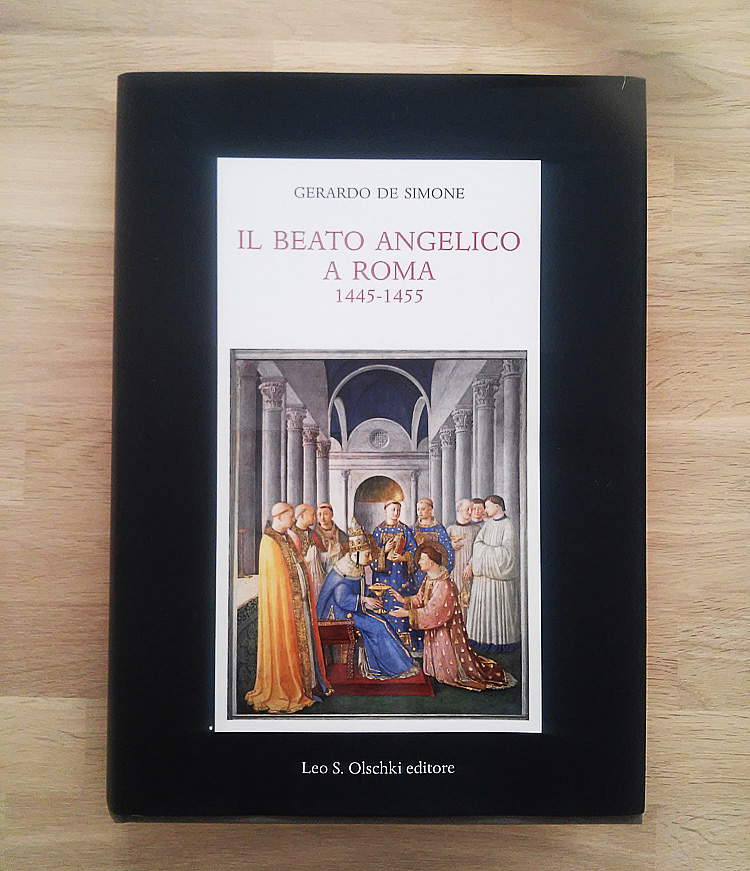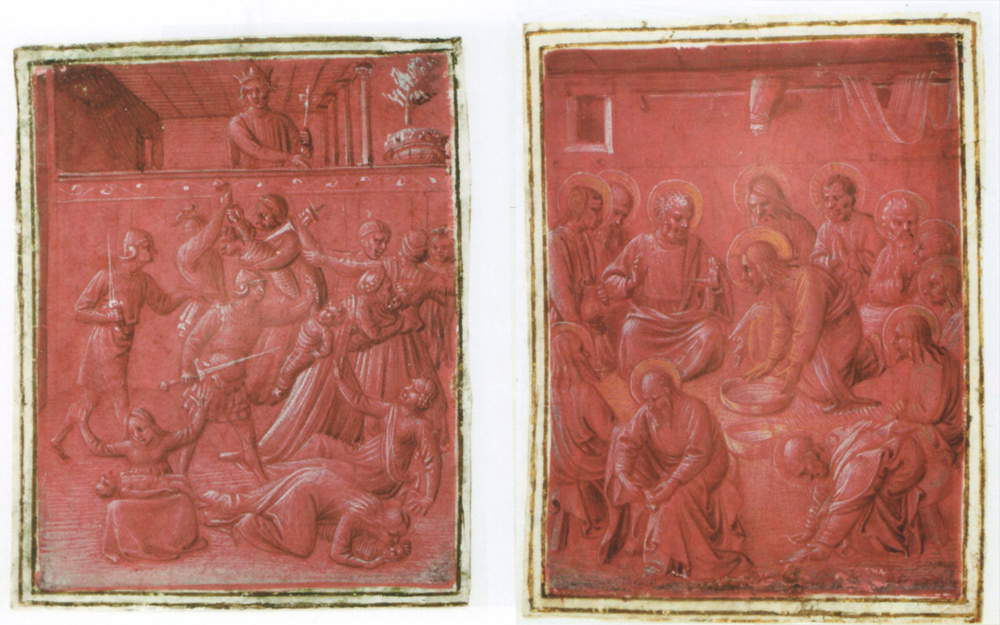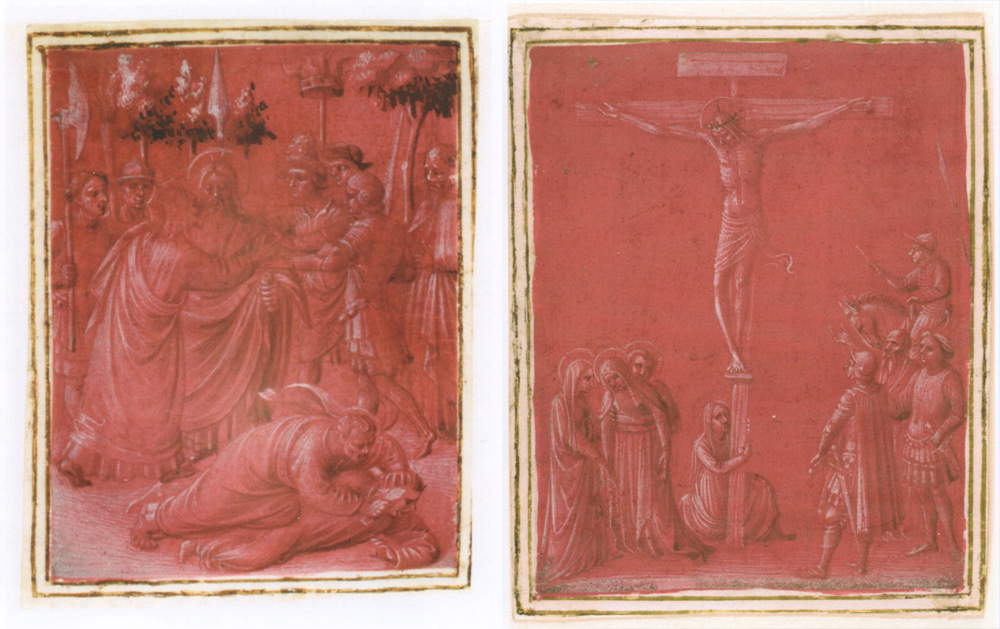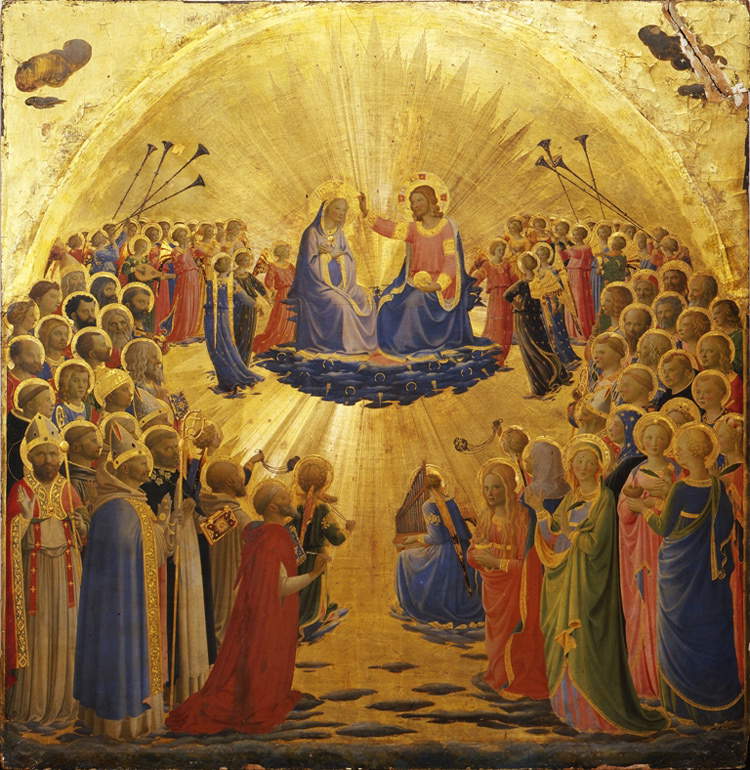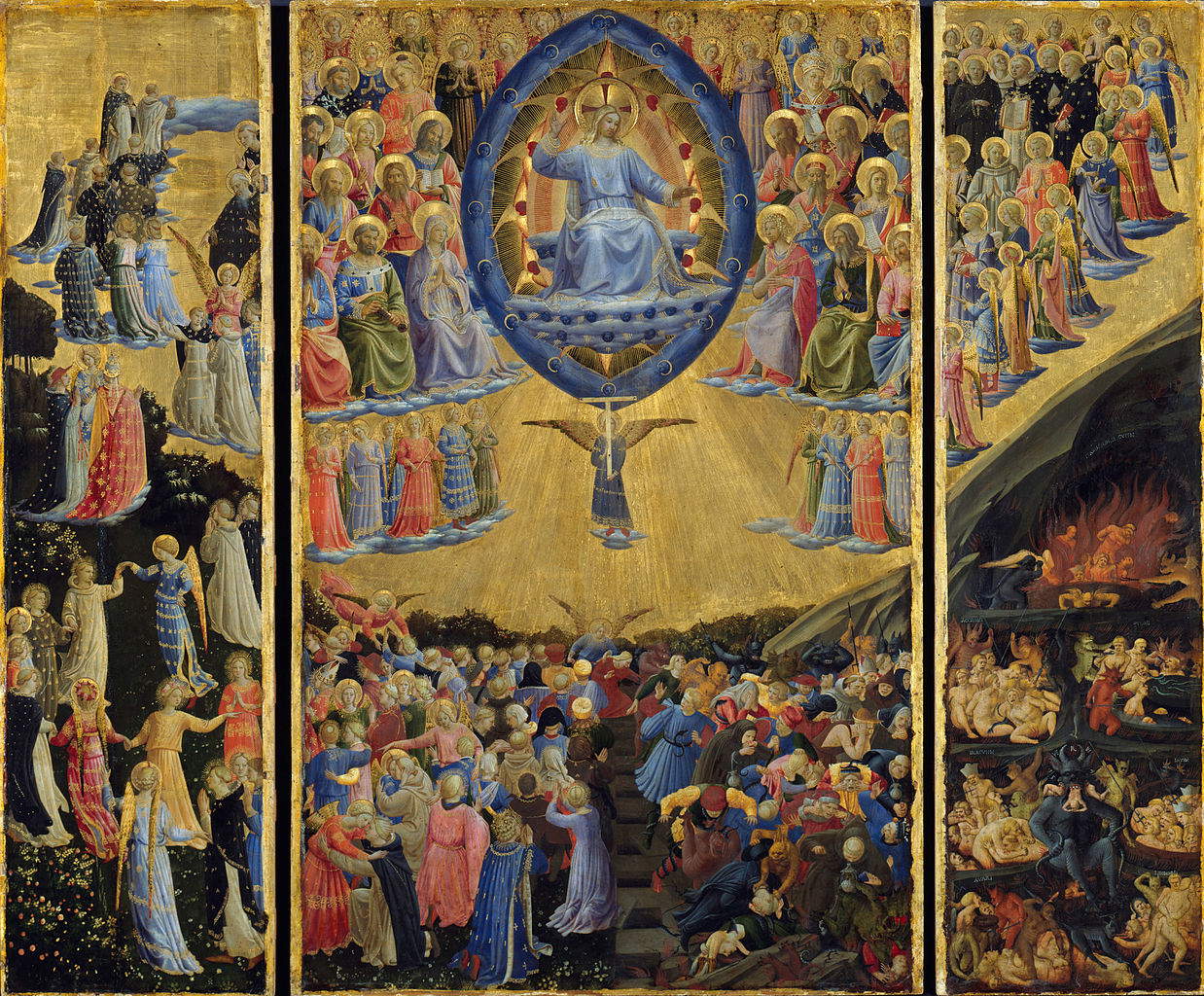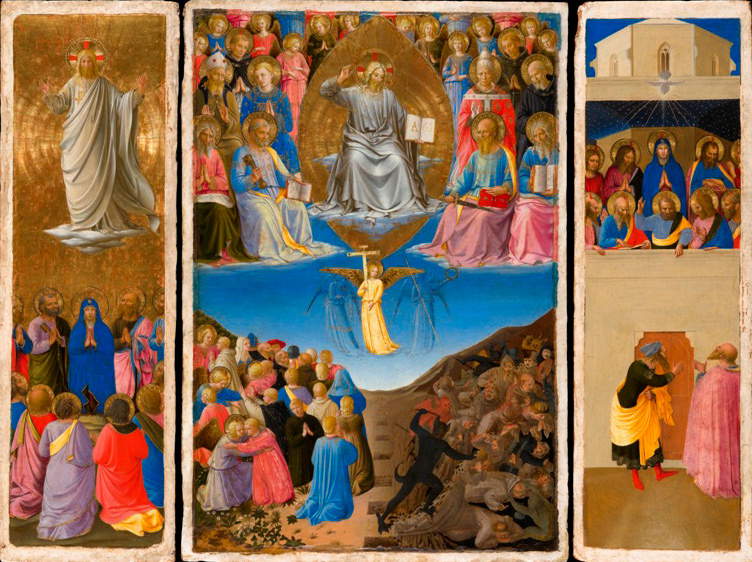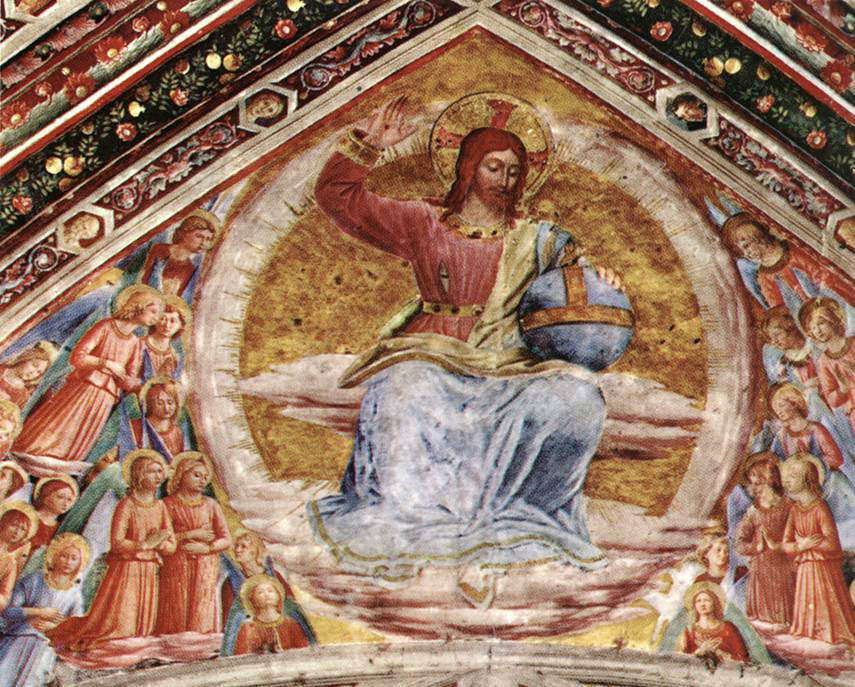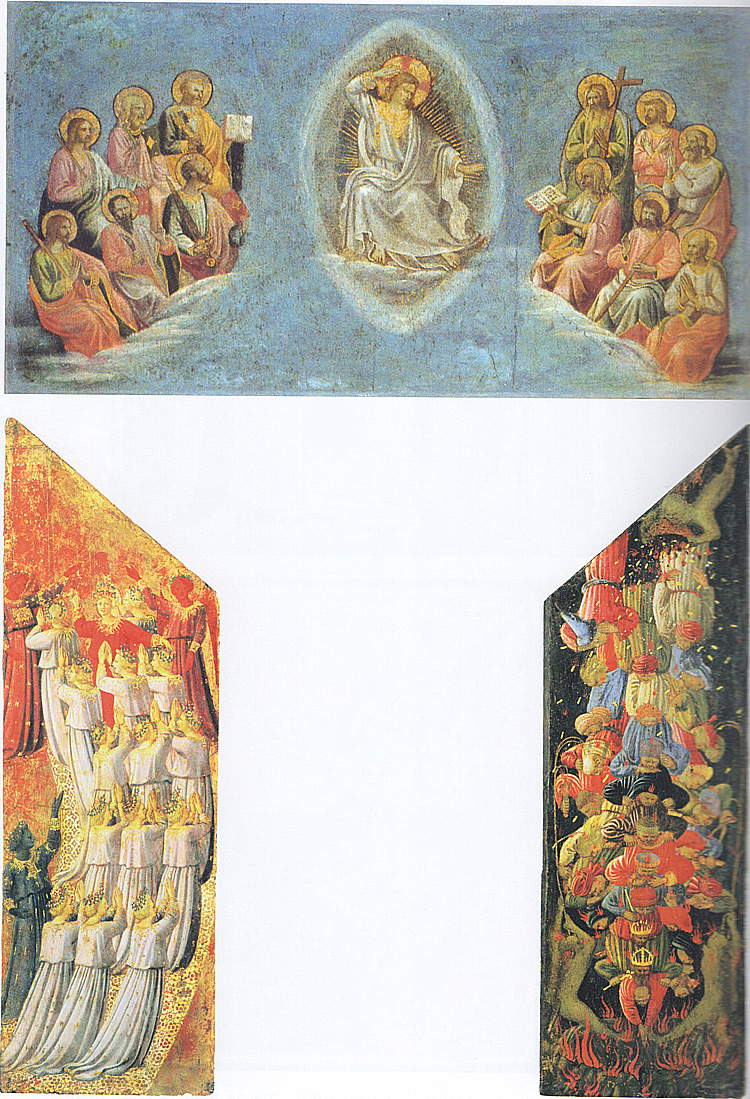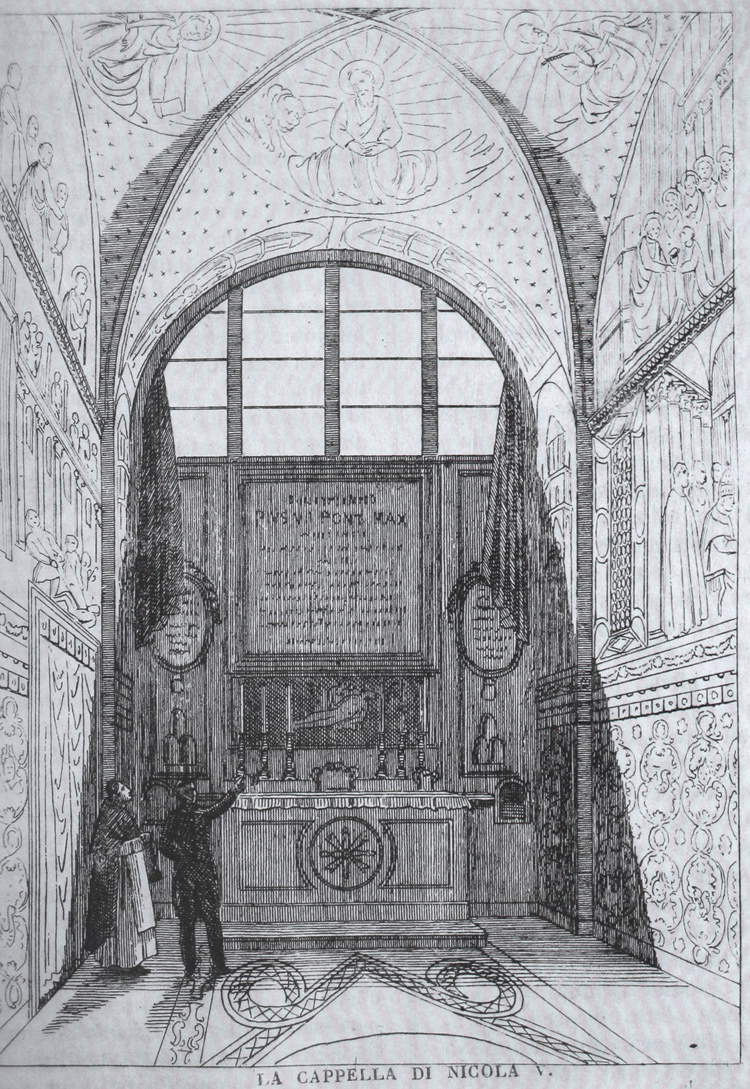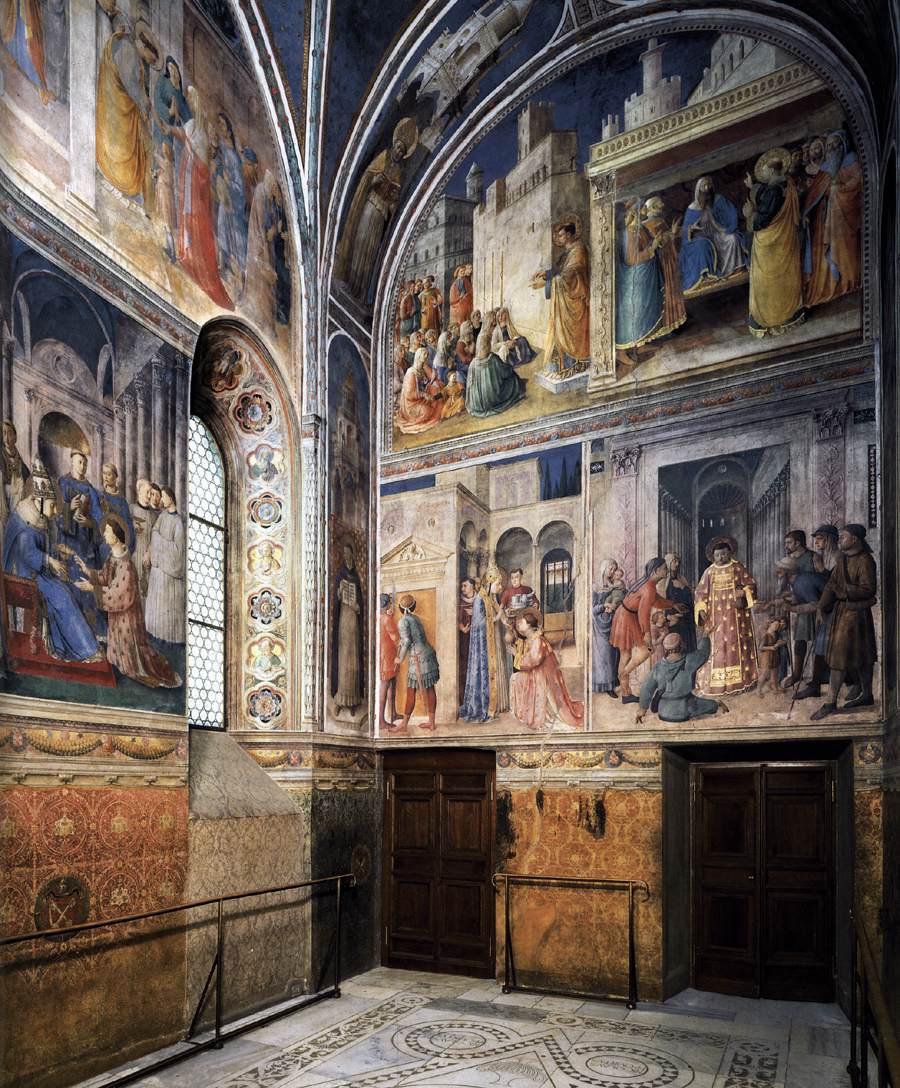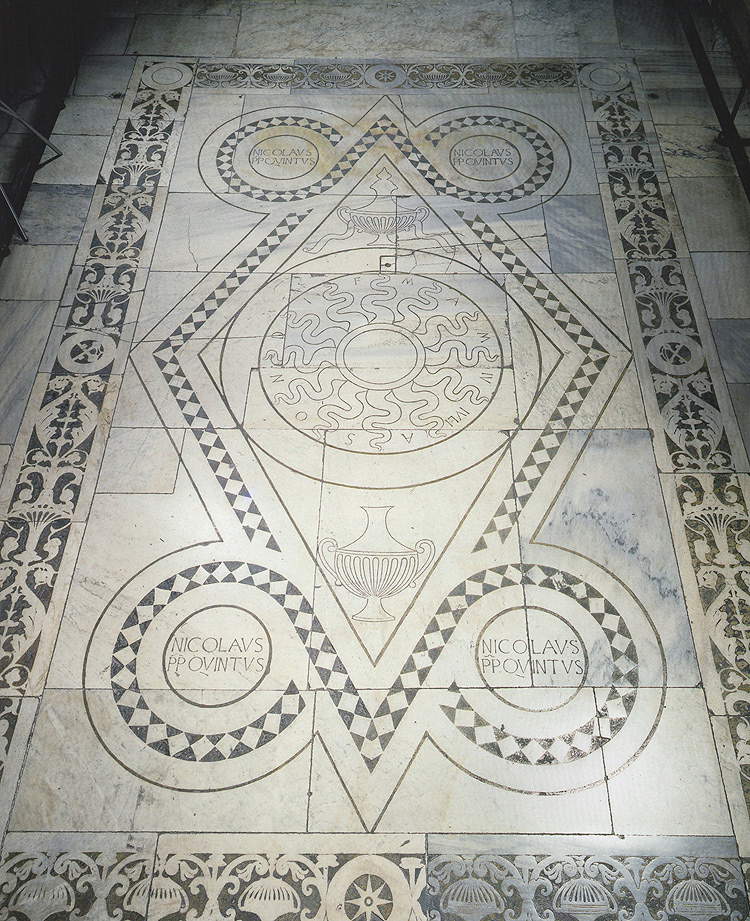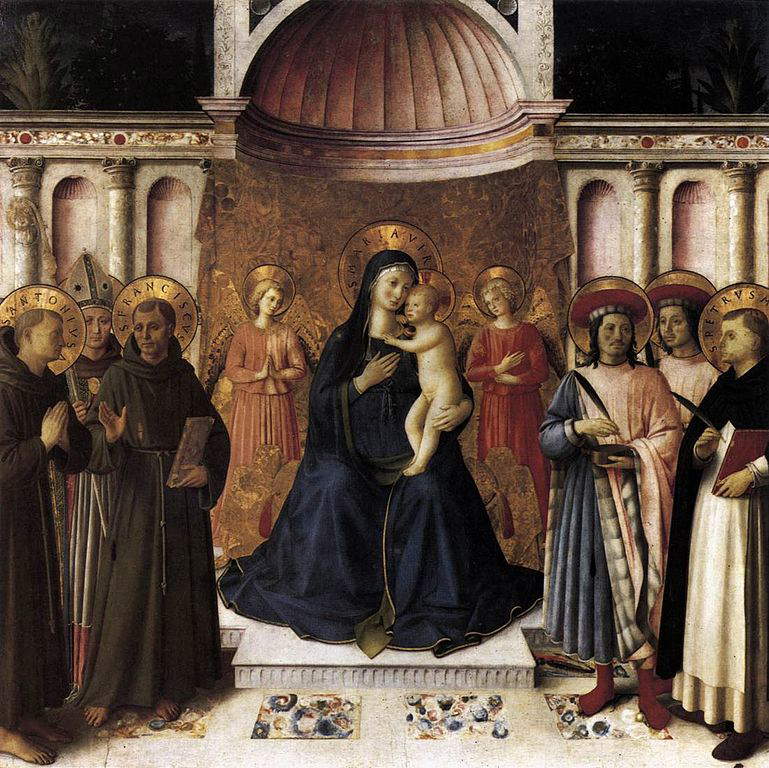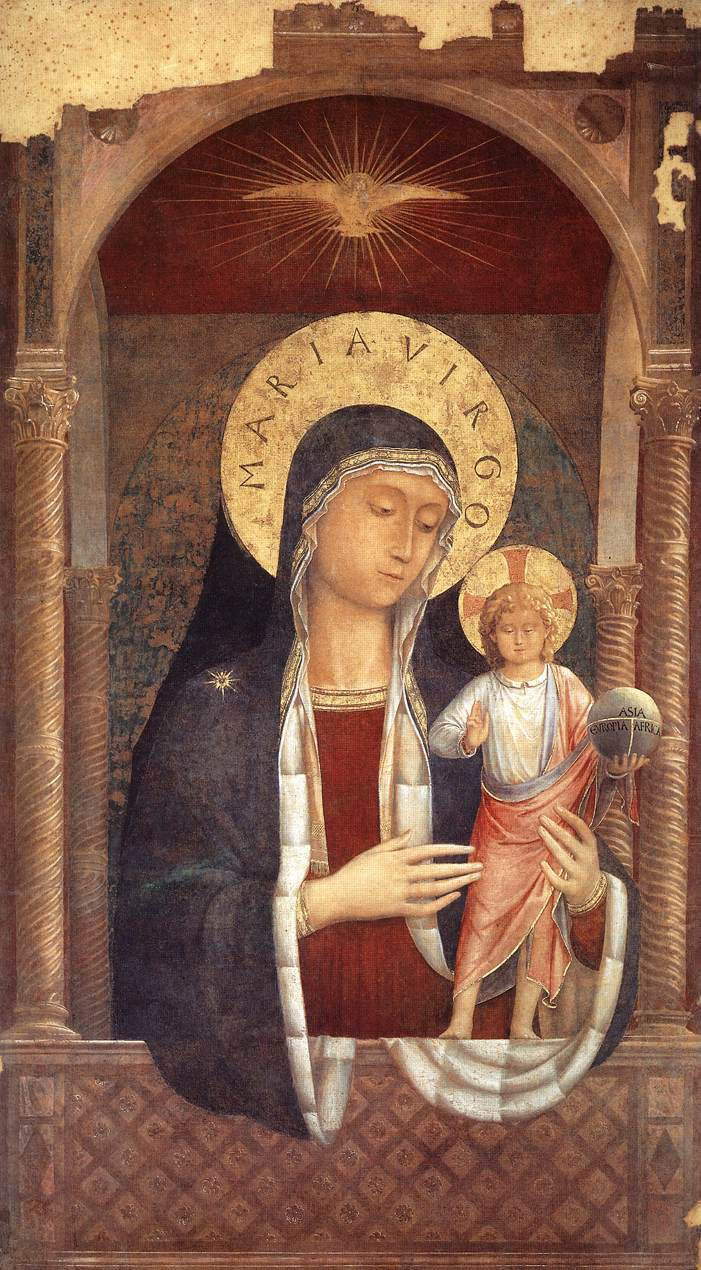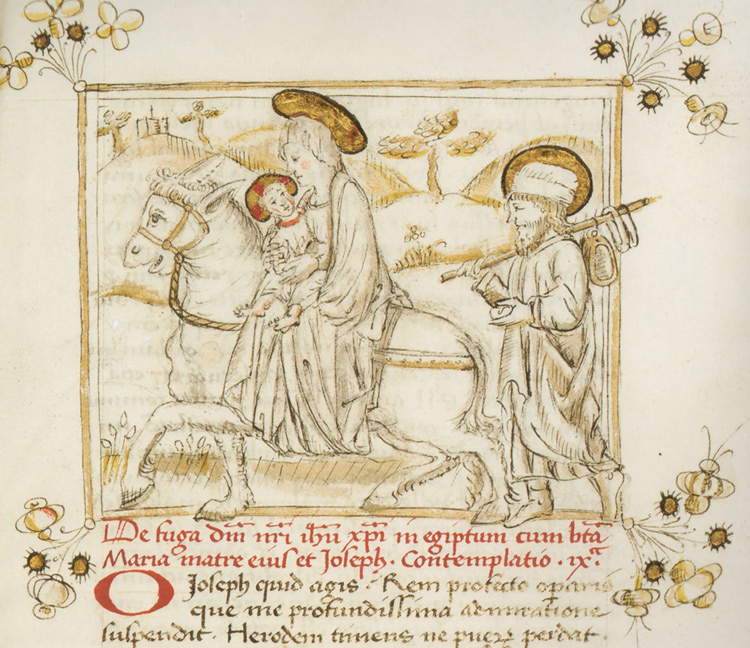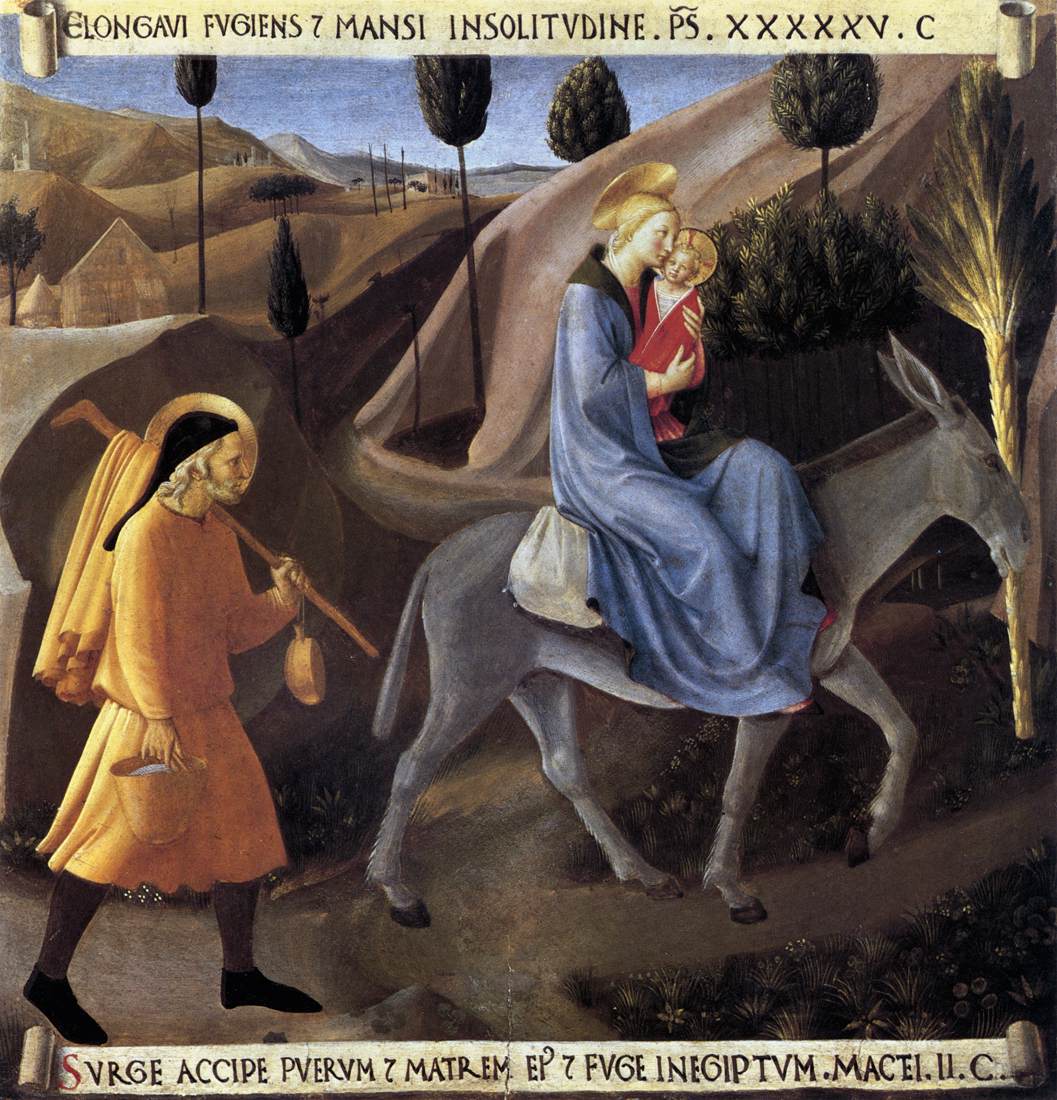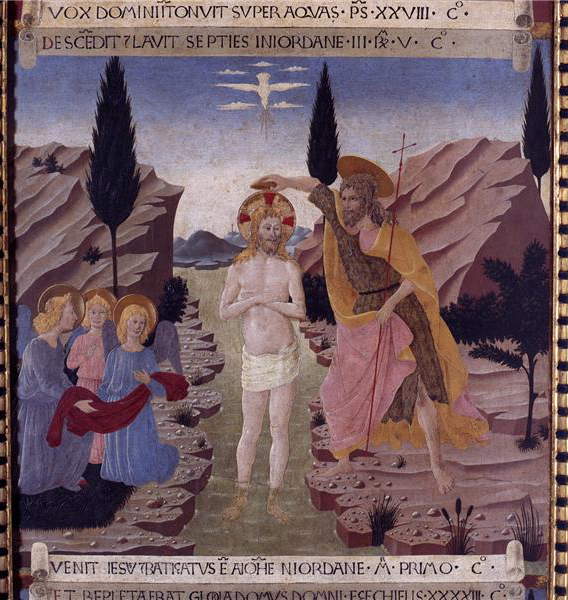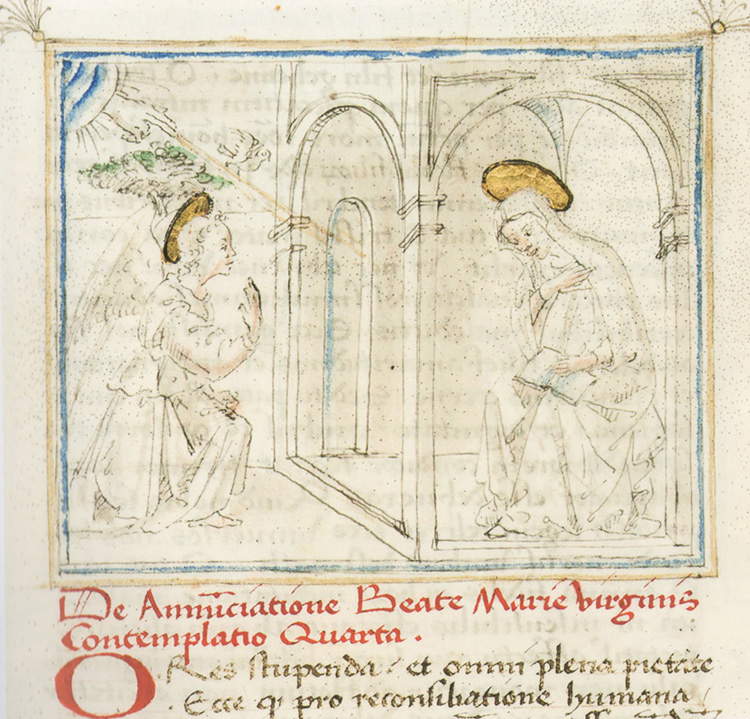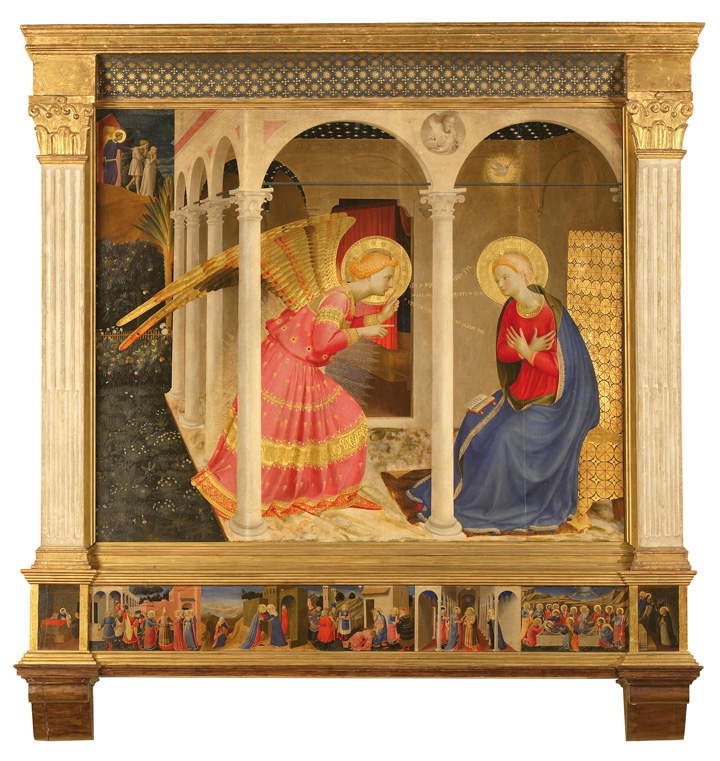by Federico Giannini (Instagram: @federicogiannini1), published on 21/08/2018
Categories: Books
/ Disclaimer
Review of Gerardo de Simone's monograph, 'Il Beato Angelico a Roma 1445-1455. Rebirth of the Arts and Christian Humanism in the Urbe of Nicholas V and Leon Battista Alberti'
It has a classical and monumental scope in the monograph Il Beato Angelico a Roma 1445-1455. Rebirth of the Arts and Christian Humanism in the Urbe of Nicholas V and Leon Battista Alberti, the latest work by Gerardo de Simone (Castellammare di Stabia, 1974), an art historian who specializes in Italian Renaissance painting: a challenging, analytical, art-historical volume at the same time, constantly stretched between two poles. The first is tradition, in the furrow of which the work fits fully, as much in form, taking on a grave style and an elegant typographical layout with a twentieth-century flavor, as in content, recalling with abundance, precision and completeness sources and studies on the Roman sojourns of Fra ’ Giovanni da Fiesole (born Guido di Pietro, Vicchio, c. 1395 - Rome, 1455), to whom the essay is dedicated: in particular, the book represents the first monograph devoted to the Roman years of theAngelicus pictor, who spent a decade in the then capital of the Papal States, from 1445, when he was called there by Pope Eugene IV (born Gabriele Condulmer, Venice, 1383 - Rome, 1447), who had the opportunity to see the Florentine painter at work in the convent of San Marco in Florence, until 1455, interrupting, however, his stay for a couple of years between the end of 1449 and 1452, when he returned to Tuscany, invested with the post of prior of the convent of San Domenico in Fiesole. The second pole is, on the other hand, his research dimension, which has been able to lead to several new insights about the artist, hypotheses, novelties.
Art-historical and historical volume, we said: so much so that the book opens precisely with a careful historical survey of the Rome of Eugene IV and his successor, Nicholas V (born Tommaso Parentucelli, Sarzana, 1397 - Rome, 1455). The city that Blessed Angelico found on his arrival was in the midst of renewal, thanks to the impetus that Eugene IV, moved by his desire for magnificentia, to some extent borrowed from the political action of Cosimo de’ Medici, whom he got to know and deepen in Florence (where, during his sojourns, he was able to appreciate the marvels of the Florentine Renaissance), was able to confer on it: notable artistic enterprises were initiated, such as the completion of the decorations of the nave of St. John Lateran by Pisanello, the bronze doors of St. Peter’s commissioned from Filarete, again for St. Peter’s the Tabernacle of the Sacrament, for which Donatello was commissioned. Not only that: Eugene IV took care to restore new and ancient buildings, reopened the Studium Urbis, that is, the first university in Rome, also founding colleges for less affluent students, and welcomed to his court several of the greatest men of letters of the time (such as Ambrogio Traversari, Poggio Bracciolini, the Aurispa, Leonardo Bruni, Carlo Marsuppini and Flavio Biondo). This pronounced humanistic interest, destined, together with a shrewd and effective foreign policy, to resurrect Rome by making it once again a protagonist in Italian affairs, also distinguished the actions of Nicholas V, who used part of the Vatican palaces as a place deputed to receive the founding nucleus of what would later become the Vatican Library, and which at the time of the Ligurian pope was already an important and to some extent public library anyway, “albeit partially,” since access was reserved to scholars and members of the clergy, with a book corpus ordered through inventories and loan registers, entrusted to the responsibility of librarians and custodians, to the care of copyists, illuminators, restorers and placed in a special space, in short organized in a modern sense (Flavia Cantatore). Not only that: Nicholas V, another “admirer” of Medici policy, became a promoter of the renovatio urbis that passed through the rearrangement of much of the city (buildings such as Santa Maria Maggiore, the Pantheon, the Vatican Palaces themselves, but also infrastructures such as walls, bridges and aqueducts) and the construction of new palaces, especially on the Campidoglio-Vatican axis.
In Rome, the first commission that was given to Beato Angelico (by Eugene IV) was the decoration of the Chapel of the Sacrament, whose frescoes were finished on February 23, 1447 (they are no longer extant today). And it is precisely on the lost frescoes of the Chapel of the Sacrament that Gerardo de Simone puts forward the first hypotheses contained in the monograph: as anticipated, it is in fact a profound research work that has brought to light several novelties, some of which will be the almost exclusive object of the present review (difficult, in fact, to offer an exhaustive summary of the book, given its bulk and density). With regard to Angelico’s first work in Rome, de Simone first of all traces back to that enterprise (as Miklós Boskovits had done before him) the nine drawings on parchment now preserved in part at the Museum Boijmans van Beuningen in Rotterdam and in part at the Fogg Art Museum in Cambridge, Massachusetts, siding with the positions of those who have wished to assign their authorship to the brother-painter, but he goes further: the Campania scholar, in the wake of an insight by Carl Strehlke, in fact speculates that the Chapel of the Sacrament included a Last Judgment similar to theCoronation of the Virgin now in the Uffizi. For the Florentine altarpiece, de Simone points out, it would be more correct to speak of Paradise (since, in the panel, Christ does not place a crown on Mary’s head, but merely sets a gem in the diadem she already wears), the same term with which the sixteenth-century Anonimo Magliabechiano refers to the Chapel of the Sacrament. A digression on the subject of the Judgment, moreover, leads de Simone to hypothesize that the triptych of the Judgment now in Berlin (first mentioned in 1572, in the collections of Pope Pius V), and unanimously believed to be a single original panel and then divided into later periods, was resected shortly after the 1572 attestation: the latest investigations of the copy of the Judgment formerly located in Leonforte, Sicily (now in a private collection), have confirmed a late 16th-century realization, and since this copy faithfully reproduces the resection, it is possible to advance the idea that the dismemberment took place a few years earlier.
 |
| Gerardo de Simone’s monograph. Fra Angelico in Rome. 1445-1455 |
 |
| Left: Beato Angelico, Massacre of the Innocents (c. 1450; drawing on purple parchment, 7.5 x 6 cm; Rotterdam, Museum Boijmans van Beuningen). Right: Beato Angelico, Washing of the Feet (c. 1450; drawing on purple parchment, 8 x 6 cm; Rotterdam, Museum Boijmans van Beuningen) |
 |
| Left: Beato Angelico, Capture of Christ (c. 1450; drawing on purple parchment, 7.5 x 6 cm; Rotterdam, Museum Boijmans van Beuningen). Right: Beato Angelico, Crucifixion (c. 1450; drawing on purple parchment, 8 x 6.2 cm; Cambrige, Harvard University Art Museums, Fogg Art Museum) |
 |
| Beato Angelico, Paradise (c. 1434-1435; tempera on panel, 112 x 114 cm; Florence, Uffizi) |
 |
| Beato Angelico, Last Judgment (c. 1435-1436; tempera on panel, central panel 103 x 65 cm, side panels 103 x 28 cm; Berlin, Staatliche Museen, Gemäldegalerie) |
 |
| By Beato Angelico (Scipione Pulzone?), Last Judgment (c. 1570-1580; private collection, formerly in Leonforte, Capuchin church) |
And still on the subject of the Berlin Judgment, Gerardo de Simone’s hypothesis about the probable patron, who could be identified as Cardinal Juan de Casanova (Barcelona, 1387 - Florence, 1436), is interesting: physiognomic evidence (the character led by St. Augustine in the Angelic painting resembles the only known portrait of Juan de Casanova) and historical evidence (the cardinal moved to Florence in 1435, a date Gerardo de Simone believes is consistent with the style of the Judgment) would seem to endorse the idea. Still on the Florentine artist’s Judgments, the author of the monograph hypothesizes a Roman collocation for the Judgment now in the Corsini Gallery in Rome and, finally, links the Christ Judge in the Chapel of San Brizio in Orvieto to the counterpart tablet now in the Musée du Petit Palais in Avignon, assembled on a blue background through the use of three original fragments, and of very recent Angelic attribution (it was assigned to him without hesitation by Michel Laclotte in 2005). The Avignon work, which would constitute a precedent for the Orvieto fresco, was, according to Gerardo de Simone, perhaps the central panel of a triptych whose side compartments were probably the panels with the Blessed and the Damned now preserved at the Museum of Fine Arts in Houston: an interesting novelty, a hypothesis that, according to the scholar, is supported by the “stylistic point,” the “ghibertism of the poses,” and the “color range tending toward lilac-violet,” which would be the same in both the Avignon painting and the U.S. panels.
Other interesting hints come from the portraits of illustrious men that the artist had painted in the chapel, also according to Giorgio Vasari: “In which work [the Chapel of the Sacrament, ed.], which was excellent in that manner of his, he had worked in fresco some stories from the life of Jesus Christ, and made there many natural portraits of distinguished persons of those times, which peradventure would be lost today, if Giovio had not made these for his museum.” We have no idea how Beato Angelico inserted these portraits into the chapel (that is, whether he inserted the full-length figures directly into the scenes, as Benozzo Gozzoli did in the Chapel of the Magi in Florence, or whether there were portraits on the frames), but Gerardo de Simone finds in this cycle of portraits an interesting cue to delve into the relationship between Angelico and one of the most important French painters of the time, Jean Fouquet (Tours, c. 1420 - c. 1481). In fact, a hypothesis by Fiorella Sricchia Santoro has it that the author of these portraits was Fouquet himself, who at the time was just over twenty-five years old, was in Italy and presumably had already distinguished himself for his skills as a portrait painter: having arrived in Rome, Fouquet painted (and this is certain news) a portrait of Eugene IV, now lost but known through a copy executed by Cristofano dell’Altissimo (Florence, 1525 Florence, 1605). The painting was intended for the sacristy of the basilica of Santa Maria sopra Minerva, the seat of the Dominicans in Rome, a place where Blessed Angelico (who was a Dominican friar) resided, and a building that was the subject of important work promoted by Cardinal Juan de Torquemada (Valladolid, 1388 Rome, September 26, 1468) who, as will be seen later, had very close and fruitful relations with Angelico, and can probably be identified as Fouquet’s patron. De Simone believes that “Angelico may have played an important role in ’sponsoring’ the young Frenchman, given that he was the papal painter and given that his Roman residence was precisely the Dominican convent of Minerva for which the portrait was intended.” This was also due to the fact that perhaps the two had met before in Florence: the relationship between them was therefore “deep and important, and not one-way from the older master to the younger one: the realistic-portrait sensibility, and a certain formal magniloquence, of which the Dominican blessed in fact manages to show in the late phase of his activity were not immune to the influence of the genius of Tours.”
 |
| Left: Detail with St. Augustine guiding Juan de Casanova in the Berlin Judgment. Right: Lleonard Crespí, Dedication of the codex to King Alfonso the Magnanimous by his confessor Joan de Casanova, detail (after 1424-before 1430; British Library, Ms. Add. 28962, fol. 14v) |
 |
| Beato Angelico, Triptych with Ascension, Last Judgment and Pentecost (c. 1446-1448; tempera on panel, central panel 55 x 38.5 cm, side panels 55 x 18 cm; Rome, Corsini Gallery) |
 |
| Beato Angelico, Christ Judge and Angels (1447; fresco; Orvieto, Duomo, Chapel of San Brizio) |
 |
| Top: Beato Angelico, Last Judgment (c. 1430-1432; Avignon, Musée du Petit Palais). Bottom, left: Beato Angelico, Beati (c. 1430-1432; on deposit in Houston, Museum of Fine Arts). Right: Beato Angelico, Damned (c. 1430-1432; on deposit in Houston, Museum of Fine Arts). |
Of the Niccolina Chapel, the great undertaking that Nicholas V commissioned from Beato Angelico as well as the only one of his Vatican works to have been preserved, Gerardo de Simone traces, with meticulous and precise reconstruction, the history, iconography, and critical fortunes: regarding the latter, the author lists several previously missed news items, beginning with the existence of an early monographic essay on the chapel, by the German Aloys Ludwig Hirt and published in 1789, and continuing with a reference to a “neglected monographic essay” by Maurice Faucon, who even considers Beato Angelico’s work superior to Raphael’s Vatican frescoes, all the way to a lyric by the half-unknown nineteenth-century German poet Karl Adam Berthold, who sang of the meeting between the brother-painter and the Sarzano pontiff, and whose composition was published in 1880 in the newspaper Die Gartenlaube, accompanied by an illustration by an unspecified J. Lang. Speaking more specifically about the Niccolina Chapel, we can begin by reconstructing the events of the great Deposition that in ancient times decorated the back wall of the room (we do not know, however, whether it was a fresco or a panel): Gerardo de Simone starts from an 1853 engraving in which part of the work, depicting the Deposition of the Cross, can still be seen in a pose similar to the one it takes on in the Deposition now in the National Gallery in Washington, to arrive, however, at the conclusion that it is not possible to establish with certainty whether the piece seen in the engraving is actually the fragment of the Angelic Deposition. On the ideological underpinnings of the decorations of the chapel (frescoed with the stories of Saints Stephen and Lawrence), the author reiterates, among other things, that the parallel vicissitudes of the two saints offer a paradigm of exemplarity that is alien to celebrations and explicit triumphalism [...] but which is expressed instead in the solemn and timeless tones of the liturgy and is articulated according to the pivotal values of a renewed ecclesiology, shaped together by the reflections of theologians and the stresses of the historical moment: papal primacy and diakonía / service (in the two Ordinations); caritas (in the respective Distributions of alms) and the preaching of the Gospel (in the Preaching of Stephen and the Conversion of Lucillus); and martyrdom, the extreme witness of faith and imitatio Christi.
Alongside this “anti-celebratory ideology, of total dedication to one’s neighbor, of charitable renunciation of Church goods in order to assist the needy,” however, was aligned the need to highlight Nicholas V’s great work of renovatio: there subsisted, trivializing, the problem of making celebration and anti-celebration coexist. It is safe to assume that Blessed Angelico found the answer within architecture: one chapter of the essay is devoted precisely to the monumental architecture of the Niccolina Chapel, inspired as much by the vestiges of classical Rome as by the contemporary achievements of the (Classical) Florentine Renaissance, notably Brunelleschi’s and Alberti’s. This mixture of classical and religious instances, an evident emergence of Beato Angelico’sChristian humanism, finds one of its peaks in the floor of the Niccolina Chapel, about which Gerardo de Simone proposes one of the most interesting novelties in the monograph, namely the attribution of the work to Leon Battista Alberti (Genoa, 1404 - Rome, 1472), justifying the position on the basis of stylistic findings (the sun in the center of the floor, for example, closely resembles that of Alberti’s façade of Santa Maria Novella in Florence, where it is also possible to find the motif of the bi-anchored vase), philosophical (the presence in Leon Battista Alberti’s treatises of many pages devoted to floor decorations, often in relation to ancient works, but also the complex symbolism of the Niccoline floor, compatible with the conceptual assumptions that a person like Alberti might have suggested), historical (the fact that Beato Angelico was aware of Alberti’s theories).
Proceeding further in the reading of the volume, it is useful to point out a further novelty, namely, the attribution to Blessed Angelico of a fragment with the Madonna of Fever now preserved in the Museum of the Treasury of St. Peter ’s but once in the Rotunda of St. Andrew’s (also known, from the sixteenth century, as “Santa Maria della Febbre”), demolished between 1776 and 1777. The fresco owes its name to the fact that in ancient times the faithful went there to invoke prodigious healings, and despite the heavy repainting that occurred in later periods, stylistic comparisons (for example with the Madonna and Child that appear in the Bosco ai Frati altarpiece, now housed in the Museo di San Marco in Florence, or with the Madonna and Child in the Kunstumuseum in Bern) suggest the idea that Fra Angelico might have dealt with the painting, which itself represented a radical remake of a 14th-century original. De Simone also brings ideological details in support of his hypothesis: the little church of Santa Maria della Febbre at the time underwent major renovations (in particular, it was covered with wooden ornaments, as was the case with the study of Nicholas V in the Vatican: it was in fact a type of decoration particularly appreciated at the time) and it is probable that Angelico’s revisitation of the ancient fourteenth-century painting was part of a program of affirmation of “modern Marian devotional iconography in Rome,” in line with the realization, a few years earlier (around 1449: the Madonna of Fever is instead placed in a period roughly between 1453 and 1454), of the great jubilee banner of the Minerva, which responded to the same solicitations.
Finally, the chapter devoted to the lost cycle of frescoes that once decorated the cloister of Santa Maria sopra Minerva deserves great attention: the convent was a place where both Blessed Angelico and the aforementioned Cardinal Juan de Torquemada resided, who left his own substantial library to the Minerva monastery. Gerardo de Simone’s merit is that of having focused on Torquemada’s role in the decorations of the cloister (which had already been destroyed in the sixteenth century as a result of some renovation work). A study of the ancient sources shows that Torquemada devised the iconographic program of the cloister on the basis of one of his texts, the Meditationes reverendissimi patris domini Johannis de turrecremata Sacrosancte Romane ecclesie Cardinalis posite et depicte de ipsius mandato in ecclesie ambitu sancte Marie de Minerva Rome, which already highlights in the title the relationship that the contents were to have with the painted scenes. The Meditationes (thirty-four religious meditations on episodes from the Old and New Testaments, mainly on the stories of Christ) represent the first illustrated book to be printed in Italy (this was 1467), so they are well known to bibliologists, but the same cannot be said for art historians (de Simone’s monograph, however, fills in the gaps). It is not known whether Torquemada had the cloister built ex novo, as some ancient sources would seem to indicate (this was probably not the case: several texts suggest, from certain clues, beginning with the cosmatesque motifs of the architectural decorations, that the cloister was earlier): he certainly had it decorated, however, as historian Gaspare Veronese, who was present at the time of the events, attests (“Claustrum sanctissimae Mariae Super Minervam pulcherrimis epigrammatibus historiisque egregie exornavit,” or “[Torquemada] adorned the cloister of Santa Maria sopra Minerva egregiously and with beautiful histories and inscriptions”), and just as surely suggested its contents. Another merit of de Simone is thus that of having tackled an exhaustive and unpublished study of the Meditationes in relation to the art of Beato Angelico, indicated by the scholar as the author of the Minerva frescoes. De Simone argues that “the magnitude of the undertaking, the centrality of the site, and the stature of the patron undoubtedly lead one to think of a leading artist” as the author of the cycle: an artist “of established fame, capable of keeping up with a cycle that was extensive in size and complex in iconography.” The Latin Vatican Codex 973, a manuscript containing the illustrations of the Meditationes, is placed in relation to the cloister paintings, and due to the fact that the illustrations present a “clear Italian, and more precisely central Italian (better still, Tuscan-Florentine) imprint, in the general design as in the details,” as well as to the fact that the work is signed with an autograph note by Torquemada, it is possible to think of this manuscript as the “most important trace for an ideal reconstruction of the original decoration of the cloister.” De Simone then proceeds with many convincing comparisons between the illustrations in the manuscript and Beato Angelico’s paintings: the Flight into Egypt, for example, is identical to the same scene that appears in Angelico’s Armadio degli Argenti, and the same is true for the Baptism of Christ and the Wedding at Cana (whose scenes in the Armadio degli Argenti were painted by Alesso Baldovinetti to Angelico’s design), and again theAnnunciation reveals similarities with the homologous panels now in the Prado, Cortona and San Marco, the Temptation of Christ resembles the scene frescoed in San Marco, and so on. There are many similarities found by the scholar, such that there is little room for doubt as to the Angelican authorship of the lost frescoes.
 |
| The Chapel of Nicholas V. Painted in fresco by Beato Angelico in the Vatican, engraving published in “L’Album. Literary Journal of Fine Arts,” Rome, XX, Dec. 31, 1853 (detail) |
 |
| Beato Angelico (and Jacopo del Sellaio), Deposition of Christ (c. 1440-1445 and c. 1460-1465; tempera on panel, 88.9 x 54.9 cm; Washington, National Gallery) |
 |
| The Niccolina Chapel |
 |
| Varrone d’Agnolo Belfradelli on a drawing attributed to Leon Battista Alberti, Marble Floor of the Niccolina Chapel (1450-1451; Vatican City, Vatican Palaces) |
 |
| Giovanni di Bertino on a drawing attributed to Leon Battista Alberti, Facade of santa Maria Novella, detail (c. 1460-1470; Florence, Santa Maria Novella) |
 |
| Beato Angelico (?) and seventeenth- and eighteenth-century restorers, Madonna and Child known as Madonna of Fever (c. 1453-1454; detached fresco; Vatican City, Museum of the Treasury of St. Peter’s) |
 |
| Beato Angelico, Pala di Bosco ai frati (c. 1450; tempera on panel, 174 x 174 cm; Florence, Museo di San Marco) |
 |
| Beato Angelico, Madonna and Child (c. 1450; tempera on panel; Bern, Kunstumuseum) |
 |
| Juan de Torquemada, Meditationes (c. 1463; Vatican City, Biblioteca Apostolica Vaticana, Vat. Lat. 973, c. 9r), Flight into Egypt |
 |
| Beato Angelico, Flight into Egypt, detail from the Armadio degli Argenti (1450-1452; tempera on panel; Florence, Museo di San Marco) |
 |
| Juan de Torquemada, Meditationes (c. 1463; Vatican City, Biblioteca Apostolica Vaticana, Vat. Lat. 973, c. 11v), Baptism of Christ |
 |
| Beato Angelico, Baptism of Christ, detail from the Armadio degli Argenti (1450-1452; tempera on panel; Florence, Museo di San Marco) |
 |
| Juan de Torquemada, Meditationes (c. 1463; Vatican City, Biblioteca Apostolica Vaticana, Vat. Lat. 973, c. 4v), Annunciation |
 |
| Beato Angelico, Annunciation (c. 1430; tempera on panel, 175 x 180 cm; Cortona, Museo Diocesano) |
To speak of Beato Angelico in Rome is essentially to speak of lost works, so much so that the one that Gerardo de Simone recounts in his important essay is, by his own admission, “unfortunately largely a history of absences and gaps”: nevertheless, to reconstruct it is to try to enact an attempt to fill those empty spaces that have long remained so. One of those empty spaces is precisely the extreme activity of the artist: a gap that can be well filled by admitting Beato Angelico’s involvement in the undertaking of the frescoes of the Cloister of Minerva. And as we have seen, the one just mentioned is only one of the many proposals put forward by Gerardo de Simone: for this and many other reasons, his is already a fundamental contribution to studies on the Tuscan painter, indispensable also because it avails itself of a powerful bibliography that summarizes all the previous tradition on the subject, with extreme punctuality.
In conclusion, then, it is necessary to mention that one of the main objectives of the essay is to place Angelico, and specifically the Roman Angelico, in the position that is most suitable to him. A breakthrough artist, Blessed Angelico was able to renew Roman painting in a humanistic sense, exactly as was happening in Florence: thus not so much an exclusively pious and devout painter or a mystical painter, as he has been portrayed by so many biographers and historiographers, but an artist assimilable, in will, ideas and weight, to a Leon Battista Alberti or a Piero della Francesca, to such an extent that he procured the honor of a monumental burial in Santa Maria sopra Minerva. A burial complete with an epitaph (attributed no less than to Lorenzo Valla) that compared the artist, who was made to speak in the first person, to the great Greek painter Apelles: “Non mihi sit laudi quod eram velut alter Apelles / Sed quod lucra tuis omnia Christe dabam / Altera nam terris opera extant altera coelo / Urbs me Joannem Flos tulit Etruriae” (“Let no praise be addressed to me because I was considered a second Apelles, but because, O Christ, I gave all my gains to yours: for the first works remain on earth, but the second are in heaven. I was born in the flower of Tuscany, Urbe took me.”). Angelico was the first painter compared to an artist of classicism (before him the honor had fallen to only two architects: Brunelleschi and Buscheto, both of whom were equated with the mythical Daedalus) and, de Simone concludes, “such a celebration in a solemnly humanistic key-which so clashes with the image of the late medieval mystical painter then dominant for centuries-could only take place in Rome, the city where Angelico accomplished the final maturation of his style in the direction of a full and ’Latin’ classicism.”
Gerardo de Simone
Fra Angelico in Rome 1445-1455. Rebirth of the Arts and Christian Humanism in the Urbe of Nicholas V and Leon Battista Alberti.
Leo S. Olschki Editore, 2017
xvi-358 pages with 80 black-and-white and 80 color plates
140 euro
Warning: the translation into English of the original Italian article was created using automatic tools.
We undertake to review all articles, but we do not guarantee the total absence of inaccuracies in the translation due to the program. You can
find the original by clicking on the ITA button. If you find any mistake,please contact us.
